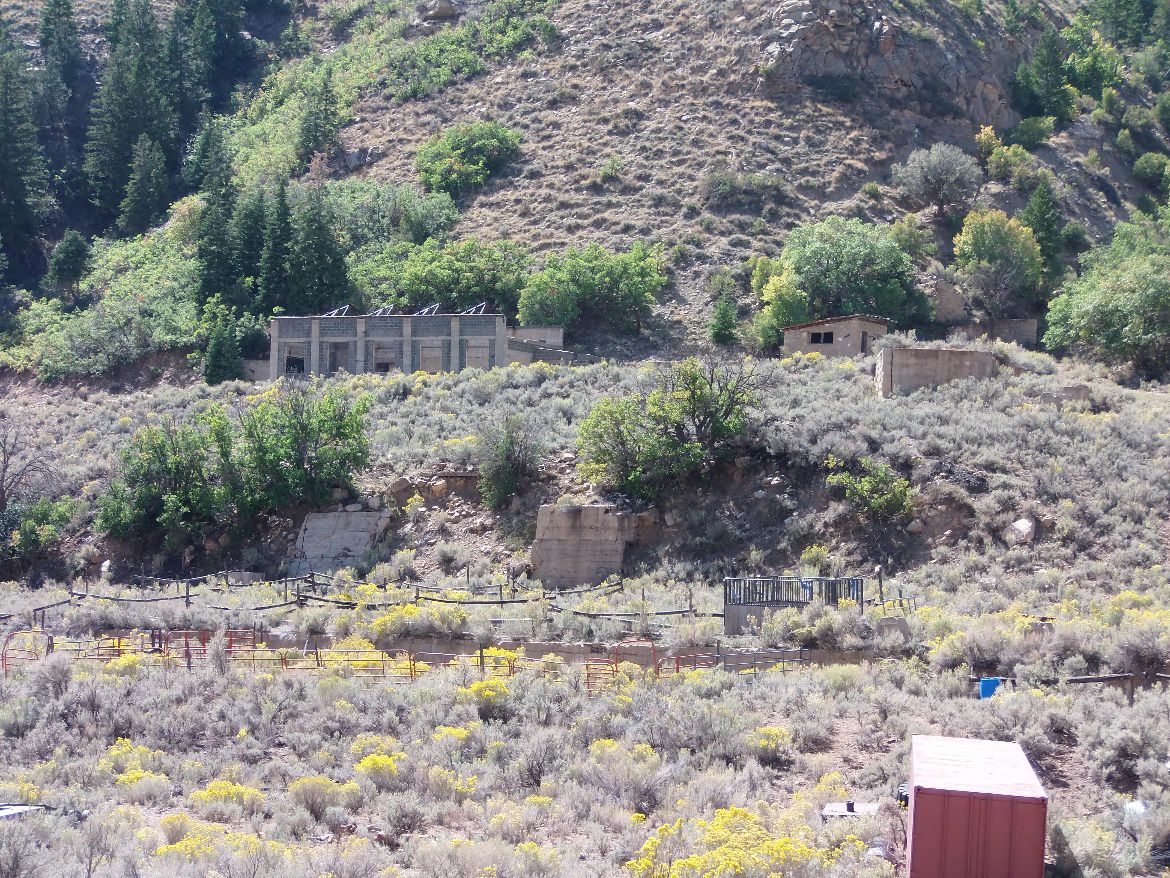The Emery County Historical Society enjoyed a walk back through history on a tour of the once booming mining towns of the Spring Canyon District established in 1895, formerly known as Storrs. Once home to over 2,000 miners, businessmen and their families.
Saturday September 22, with 65 people in attendance, some of whom had actually lived in the canyon and others whose parents were raised there, tour guide Robert Potts led us to see numerous foundations and mining remains that still exist in the canyon. Mr. Potts pointed out that some of the information he shared was gleaned from a well-worn copy of “The Driving Guide to Abandoned Mines” written by Frances Cunningham.
The tour began at the Ghost town of Peerless which was purchased by William and Charles Sweet in 1916 and began coal operations in 1917. The Sweets sold the property to the Peerless Coal Company. There Mr. Potts told of how the Denver and Rio Grande operated the railway up to the town of Mutual and being the only railway in the canyon, they could control the pricing. Mr. Storrs was not only the Mine Superintendent, but also the President of the Utah Railway and brought it up the canyon as far as Standardville, which gave the D&RG some competition. That old railroad grade is now a walking path. With the coal seam being only four feet high, master mechanic Harry Draper modified the mine equipment to fit the low coal.
The town of Spring Canyon (originally known as Storrs) had three coal seams with the top two being narrow and a thicker one on the bottom. In the narrow seams, the miners would lay on their sides to pick the coal out and then set the blasting charges. Since the mountain was too steep, the mine shop was located around the hill and through the tunnel from the mine. Coal came out of the mine in buckets to the tramway and the tramway also came through the tunnel.
The children of Spring Canyon had the luxury of a heated swimming pool heated by the tipple boiler. This boiler also heated the offices and the store. In 1943 a flood came down the canyon washing a car into the pool and destroying it. Here, they enjoyed a tennis court located on the top of Indian Head rock.
Mr. Potts retold a story from his mother about the New Year’s Eve parties held in the upper floor of the Bakery. The upper floor had a big hall and the kids from town would bring blankets and would have a New Year’s Eve party. All nationalities came together for the party. They would spend the night in the hall and if someone didn’t have a blanket they would all share.
The town of Spring Canyon (Storrs) and Standardville differed from many mine camps as the towns were laid out at the same time as the mines were being developed. The small homes, roughly 30 feet by 30 feet, and the mines were built at the same time so the workers did not have to live in tents.
In 1924, a snow slide wiped out four homes and killed three people. In the spring of that year a rock slide killed two more people and destroyed three more homes.
The “City” and the mine were so modern and well planned that the town was named Standardville as a standard for other mining camps to follow. The town boasted a large company store, steam-heated apartments, a butcher shop, a barber shop, a recreation hall, tennis courts and an elementary school with four teachers and 200 students. They also had an excellent hospital and folks came from all over because it had the best doctors.
Though some of the towns in the canyon did not allow alcohol, Standardville had more bars and taverns per capita at the time than anywhere else in the country.
The town of Latuda was not designed by Mine Superintendent Storrs. The mine opened first and the workers lived in tents while building their homes.
Locals will recognize the name of Latuda as home to the famous ghost “The White Lady”. Many a teenager will re-live stories of “White Lady” sightings up and down the canyon. It seems Latuda was a good place to bring your girlfriend if you wanted her to snuggle close. After years of sightings at and around the mine office, a troubled young man, Delmont Gentry of Price, came into possession of a blasting cap and blew up the mining office in Latuda in an attempt to kill the ghost of the white lady. Our tour guide, being a more practical fellow, believes sightings of the ghost of the “White Lady” to be nothing more than the rotating spotlight from the airport. Others may beg to differ.
At Rains, just beyond Latuda, the group had permission to walk up the canyon and take a closer look at what remains of the town that got its start in 1915. Old photos were lined up with landmarks to get an idea of how the town looked back then. A new home is being built where the old bath house and horse stables used to stand.
Just north of Rains was the mine camp of Mutual. Wonderfully preserved walls of the company store still stand among mining remains, corrals and ranching bits and pieces.
Mr. Potts mother also told him of Fourth of July celebrations when the whole population of Spring Canyon would load into wagons and travel five miles over the mountain from Mutual to Consumers to spend the day celebrating.
After completing their tour in Spring Canyon, Emery County Historical Society Members and guests were privileged to go to the Utah State University Eastern Art Gallery to view the display of “Life in a Utah Coal Camp” which was comprised of Dorothea Lange’s photographs of Consumers Mining Camp taken in 1936.
Emery County Historical Society Tours Spring Canyon

spring canyon tour
